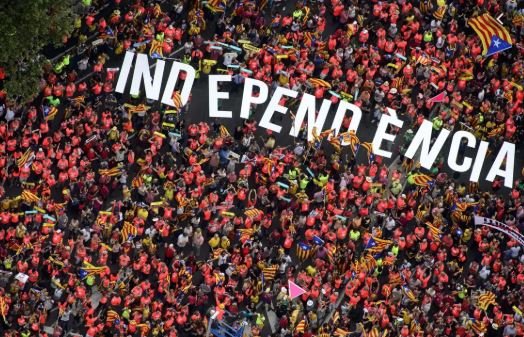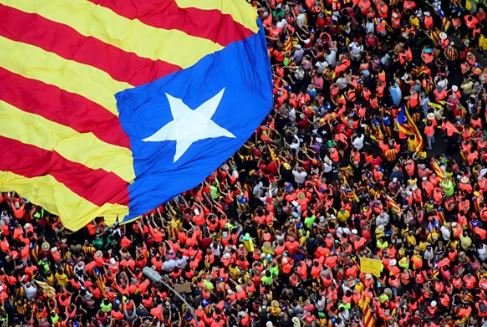History and Important Facts about Catalonia

Catalonia history and Independence struggles
Catalonia is a politically autonomous but economically successful geographical region in the Northeast of Spain. The area is popular for its age-old histories, economic greatness, industrialization, and separatist ideologies. Catalonia is composed of 4 Spanish provinces: Barcelona, Lleida, Girona, and Tarragona. A good number of the Catalans (the Catalonian people) are based in Barcelona. In the following paragraphs, we explore briefly Catalonia’s history and independence struggles over the centuries. Also inclusive are all the important facts that you probably did not know about Catalonia.
History of Catalonia
Catalonia’s emergence as a separate region happened as early as the 11th century when the Barcelona County grew into prominence. At the turn of the 12th century, Barcelona and the nearby Aragon Kingdom came under the jurisdictions of one ruler.
However, geographically, the Catalan region has been a Spanish locality since time immemorial. Spain itself was united when the Aragon King (Ferdinand) married the Castile Queen (Isabella). The couple decided to unify their kingdoms in 1469.
Signs of Divisions
The 19th century came with a different sense of Catalan self-identity. Separatist political campaigns intensified as Catalans stood firm to promote the literature of their cultural language.
Following Spain’s attainment of republican status in 1931, the Catalan region gained an increased political autonomy. In the days of the Spanish Civil War (1936-1939), the Catalonian region was a major stronghold of the Republicans.
The ending of Republican resistance began in 1939 when Barcelona fell to the conservative forces of General Francisco Franco. Under Franco’s rule, Catalan’s influence and autonomy dwindled. Catalan language and artworks were extremely suppressed by the autocratic ruler Franco. Several numbers of vocal Catalans and pro-independence activists were either killed or forced to seek asylum outside Spain.
Catalonia Independence Struggles

Catalonia Independence Protests | Image: theguardian.com
After the death of Franco in 1975, democracy took its strong footing in Spain. The democratic environment came as a huge sigh of relief to Catalonia. The region instituted their own parliaments and executive governing bodies, collectively known as the Generalitat. The establishment of Catalan governments came with an intensified sense of autonomy all throughout the latter stages of the 20th century.
Also in the 20th century, Catalonia’s autonomy got officially recognized by the new Spanish Constitution. Along with Spanish, the Catalan language became the official language in the region.
In 2010, the Spanish constitutional law court ruled and put limitations on Catalonia’s proclamations of nationhood. President José Montilla Aguilera (of Catalonia) decried the unfortunate court ruling, labeling it as an insult to Catalan dignity.
In the later stages of the 2000s, Spain’s economic woe was (still is) a major contributing factor to Catalans heightened pressure for full Independence. The region was severely rocked by the 2007-2008 global financial crisis. And in 2012, Catalan went knocking on the door of Madrid for 5 billion-Euro bailout.
Catalans have always put the blame of their recent economic slow down largely at the doors of Madrid. Catalans back their arguments with strong points. For instance, they wonder why Madrid refuses to stay out of their internal affairs. The rich and very industrialized Catalonian region contributes to the national purse more than Madrid (the Spanish capital) or any other region in Spain. Hence, it was only natural that the Catalans went ahead to blame the central government for Spain’s (predominantly Madrid -based) heavy indebtedness in 2008.
Catalan Independence Referendums
Catalans have been significantly autonomous for many years. But they want to completely break away from the rest of Spain. In 2014, Catalan parties held an independence referendum to speed up their independence struggles. The results of the referendum was positive as 80% of voters said “yes” to Catalonia’s independence.
In 2015, a series of Catalan elections pressed further for independence. As if that wasn’t enough, a popular 2017 referendum endorsed Catalan independence by even larger proportions. This separatist move also incurred the wrath of business communities and multinationals operating in the region. According to Reuters, over 4,000 companies relocated their headquarters out of Catalonia in 2017.
Response from the Spanish Central Government
The Spanish top government keeps rubbishing Catalonia’s claims and struggles for independence. By this, the central government in Madrid declared that it is highly unconstitutional for Catalans to be granted full independence. The 2017 Barcelona (Catalan) declaration of independence met the ire of the central government in Madrid. Madrid responded by briefly bringing Catalonia under the direct rule of the central government of Spain.
Important Facts about Catalonia
Well, the Catalan-Spanish political tensions continue to rage on, dying down and awakening itself intermittently. But so far, it looks like the Spanish government is nowhere close to reaching an agreement with these affluent and vibrant separatists in the northeast of Spain. Here are some very important facts about the independence-loving Catalans.
The region is triangular-shaped

The 4 Catalonia provinces: Barcelona, Lleida, Girona, and Tarragona
In Spain, Catalonia is situated at the far northeastern corners, and it comprises 4 major provinces – Barcelona, Lleida, Girona, and Tarragona. The region shares its northern borders with France and Andorra. The Mediterranean Sea is bordered to the east of the Catalonian region. A look at the Spanish map reveals a triangular-shaped Catalonia.
The region’s current population is over 7 Million
As at 2018, there were about 7.4 million inhabitants of Catalonia – this population figure represents 16% of the Spanish overall population. The Catalan land area is about 12,399 square miles (32,114 square kilometers), representing just a small 6.3% of Span’s total area.
Catalonia has a wealthy economy

Tossa De Mar, Costa Brava
Smallness doesn’t depict incapacity; over the past decades, Catalonia has proven beyond all reasonable doubts that they are rich enough to rule themselves. With an economy of over € 215 billion, Catalonia contributes up to 1/5th of Spain’s GDP (gross domestic product). Also, Catalonia contributes over 1/4th of the nation’s exports. Major export commodities from the region include chemical and industrial products and metal works. Catalans, especially areas in Barcelona, have also experienced steady industrial growth in textiles and food processing industries.
The Catalonia region has remarkably positive growth figures in tourism along its coastal regions. Most famous of these areas are Costa Brava and Costa Daurada along the Mediterranean. The Pyrenean mountains (along France’s south border) in the north is a much-favored destination among the hiking community. Catalonia’s large number of tourists influx helps to keep the economy steady annually.
Immense value is given to the Catalan Language
The linguistic culture of the Catalans is highly esteemed. Catalan, Spanish, and Occitan are 3 different languages that are spoken in Catalonia. There are written down Catalan laws that require many public workers, as well as signposts, to use both Catalan and Spanish languages. Outside Catalonia, the Catalan language is also widely spoken in Valencia, Spain.
A highly industrialized region
Numerous industries have been established in the region. Catalonia derives its huge GDP mainly from food, chemical, pharmaceutical, automobile, and energy industries. It has been estimated that these industries contribute 21% of the region’s GDP.
Barcelona has been the hub of Catalonia’s technologically advanced economy. They are famous in bioscience, IT, robotics, 3D printing and all forms of scientific research and applications.
Catalonia is renowned for its healthcare and education
When you talk about Catalonia, you are actually talking about an all-round and serious geographical region. Their healthcare system is one of the best in the globe. As a result of their advanced health facilities, Barcelona is synonymous with excellent health services.
On education, the region has up to 12 prestigious universities and more than 30 international schools. Barcelona is where you can find some of the world’s most prominent business schools such as IESE & ESADE Business School.
Barcelona has served as the hub of sports in Spain
For starters, the soccer team FC Barcelona (in Catalonia’s capital) is a huge Catalan Pride. In continental Europe, Barcelona stands tall as one of the popular tourist destinations. Thriving in every sphere of human endeavor, Catalonia is also a sports giant.
Their football club, FC Barcelona has been winning football league titles (Laliga) year after year. The club boast of having some of the best soccer players in the world. The football club has been honored to have the likes of Diego Maradona, Ronaldo Luís Nazário de Lima, Samuel Eto’o, Leonel Messi, Luis Suarez and Antoine Griezmann on their payroll.
In addition to the above numerous feats of achievements, Barcelona can also boast holding an absolutely fantastic Summer Olympic Games in 1992.
They have one of the most vibrant protests in the world

Catalonia Protests | Image: bbc.com
Catalans have been hungry for Independence for millennia. At one time, 1.6 million Catalan citizens poured themselves out onto the streets and formed a long chain to demand Independence. Almost every year, the total number of protesters hovers around hundreds of thousands. In recent years, the protests have gotten quite ugly and violent. For example, a number of properties and shops were set alight during the October 2019 Catalan protests in the wake of the Supreme Court’s sentencing of key Catalan separatist activists.



























